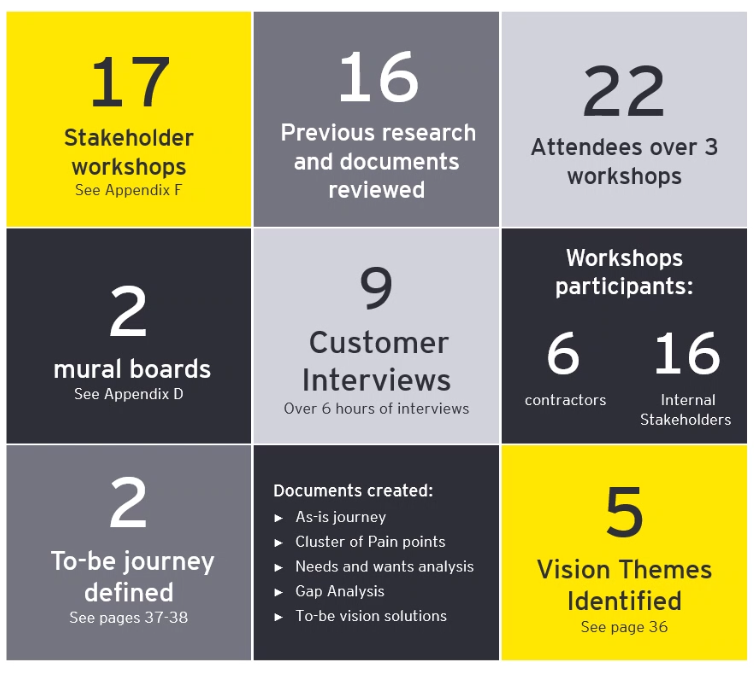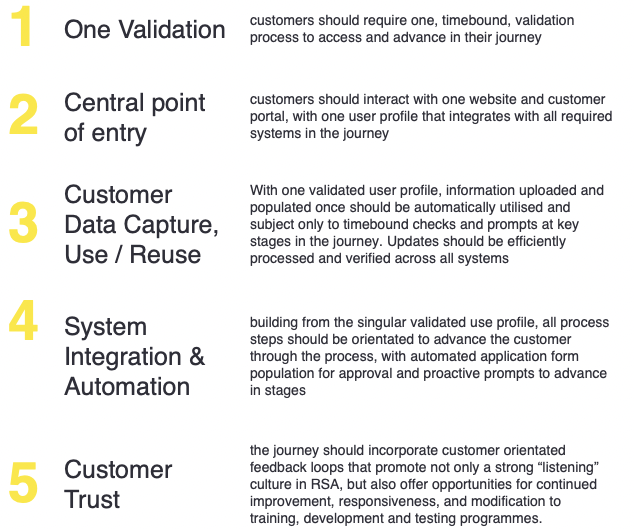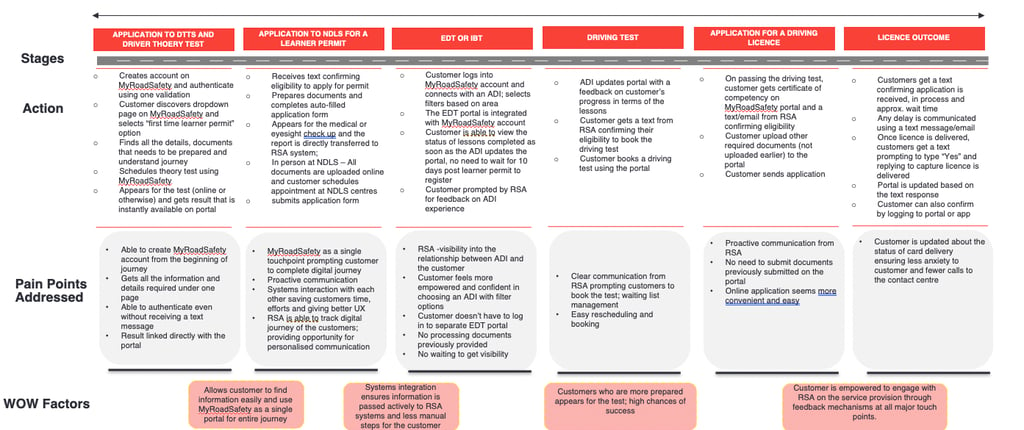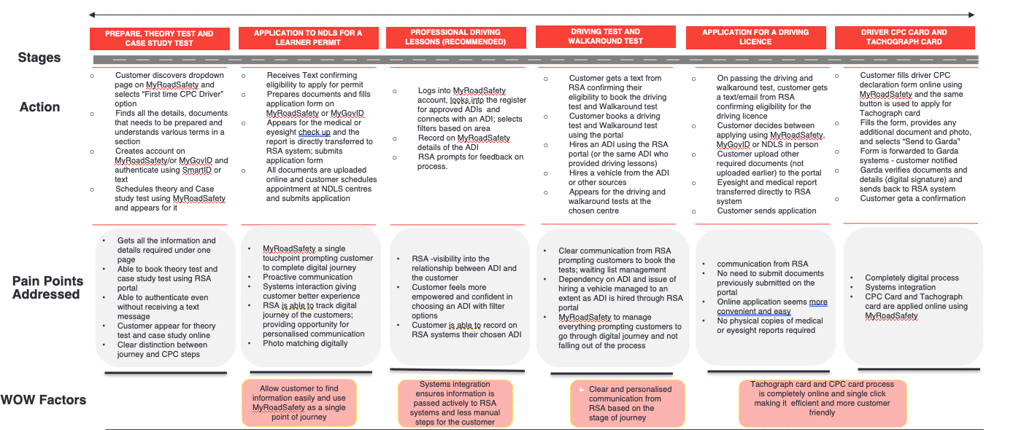RSA Drivers Licensing Integrated Customer Journey
Client Background
The RSA are leading on the implementation and coordination of the government Road Safety Strategy 2021-2030. The overarching objective is to support achieving the Vision Zero target of a 50% reduction in road deaths or serious injury by 2030.
The RSA's aim is to support the Road Safety Strategy to drive change with key stakeholders through provision of a more customer centric service that promotes essential road safety messages. To deliver on its vision of a seamless experience the RSA initiated the phase 1 of digital transformation to streamline future licensing services through a “Driver Licensing Integrated Customer Journey programme”.


Project Concept
Access to licensing services and vehicle services is currently being provided by the RSA through multiple digital touch points and different physical locations through which our customers access individual services.
These services are delivered either directly by the RSA or through outsourced service providers. In accordance with the 'digital first' strategy, the RSA has developed a customer portal (MyRoadSafety.ie) as a single digital touchpoint through which 'authenticated' customers will be able to access all services in the future.
RSA requested EY to conduct a strategic review and options analysis for licensing service delivery in an aim to deliver on its vision of a seamless experience.


Design Approach
I approached the ask in 4 different phases - the audit, assess, diagnose and delivery phase. To support my approach, I utilised the customer experience framework, which is a customer-centric and insights-led approach to navigating through as-is and future state journeys of the customers (Learner permit to driver license and Learner permit to CPC license).
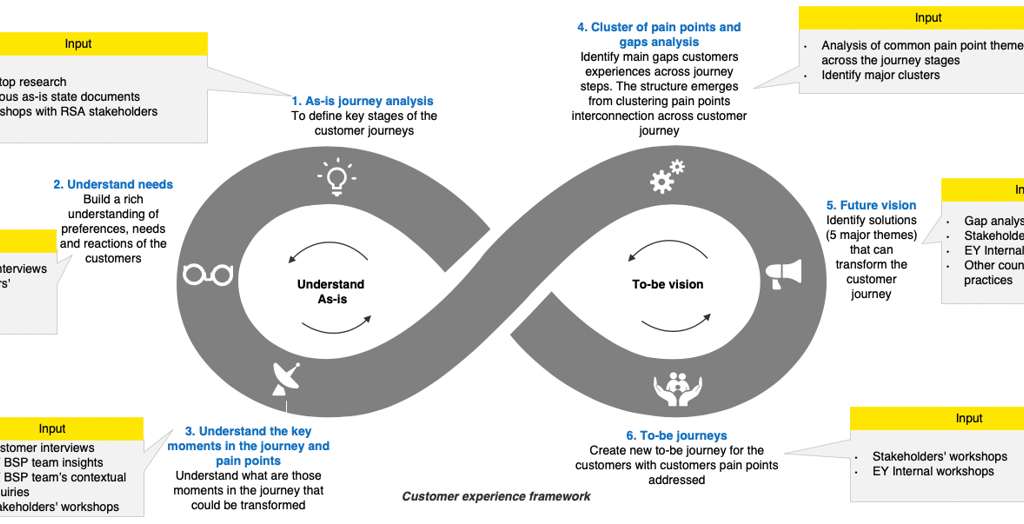

Problem Discovery Approach
As part of the Audit phase, I reviewed in detail the comprehensive library of documentations, past analysis and reports that was provided by RSA via SharePoint. In total, over 3,825 pages of previous analysis were considered.
I then conducted alongside my colleagues, a desk research and international case studies, as well as technical analysis. The service level agreements and current contractual structures were also analysed at a high level and a series of internal and external workshops with the relevant stakeholders were conducted to investigate the details and history of the several documents , as both commercial and contractual changes associated with COVID-19 and other factors has occurred in recent years.
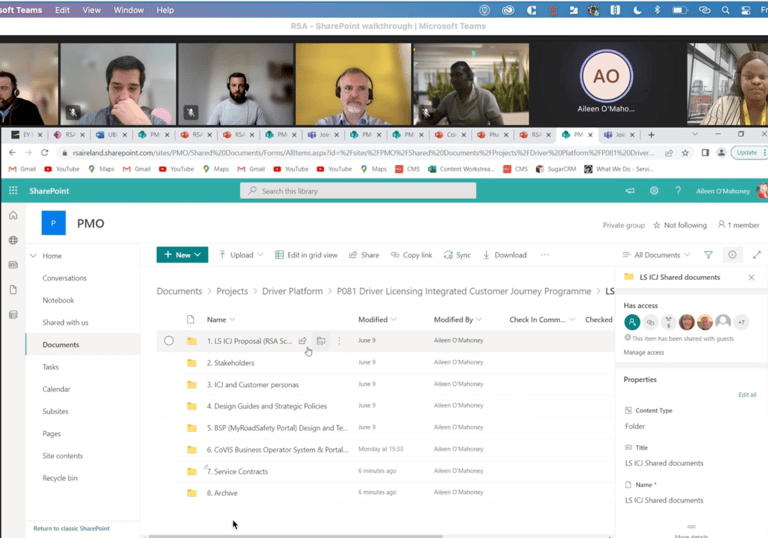

Assess Phrase
During the Assess phase, I interviewed key stakeholders, including customers, to understand their “as is” pain points and challenges engaging with the Licensing Service.
Over 6 hours of interviews with 9 customers were held. In addition, workshops were held with business service lines to better understand the current state.
In total over 19 hours across 13 business service lines, including, NDLS Front Office (“FO”), Back Office (“BO”) (Abtran) and Card Production, DTT / Prometric, EBT / IBT/ CPC/ ADI, Tachograph, Driver Testing, Technology / platforms and Customer Engagement.
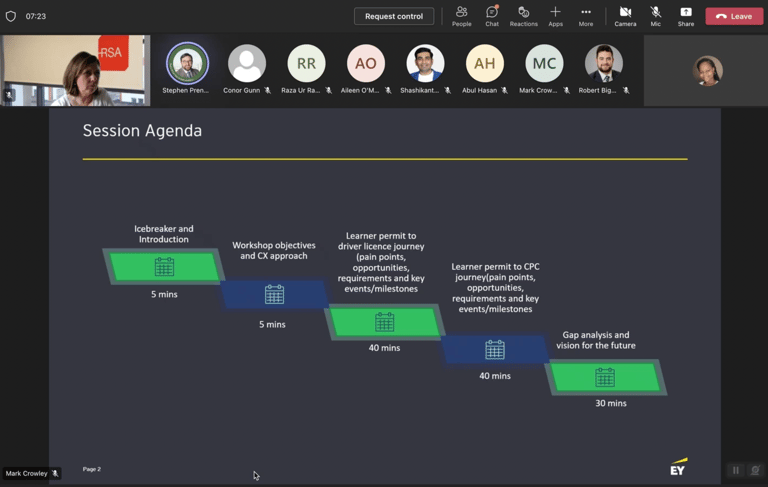

Diagnose Phase
As part of diagnose phase, I critically analyse the findings as reflective of the key questions from RSA stakeholders to identify what worked well, areas for improvement and critical enablers for the future
Two customer journeys were assessed in detail, learner to licensed driver and the professional driver. To fully understand these journeys and ways to create a more streamlined journey, several as-is assessments were conducted and validated with the RSA team during workshops. These journeys also formed the basis for the development of the target future state.
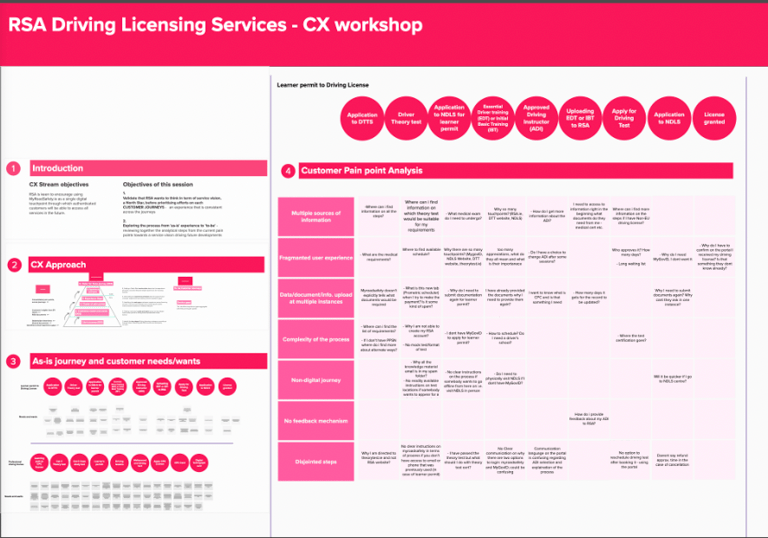

Defining the As-Is Customer Journey- Learner Permit to Driver Licence
To make sense of all the information gathered from the desk research and workshops with the different stakeholders, I proceeded to conduct a deep dive into the as-is customer journey to identify the pain point both visible and invisible ones.
What I discovered
While technical and client facing structures such as the BSP platform and MyRoadSafety.ie were implemented, licence service information and activity remains fragmented, resulting to a lack of a "single source of truth“. This is due to systems deployed concurrently, integration challenges, and limited deployed capability within BSP, all of which have an impact on the ability to achieve the vision and enablement of a truly customer and user centric experience.
As the users must interact with multiple platforms outside MyRoadSafety.ie , this has left users confused and worried about their information being stored on multiple websites.
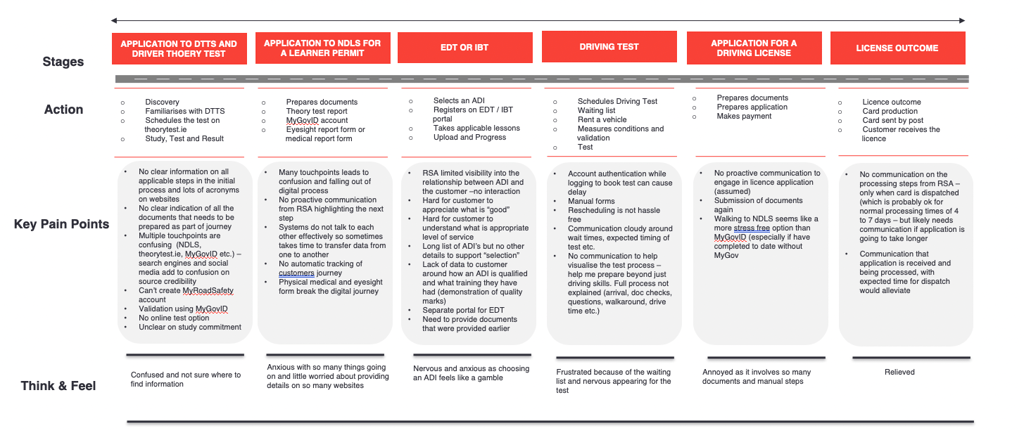

As-is Customer Journey - Learner Permit to Driver Licence
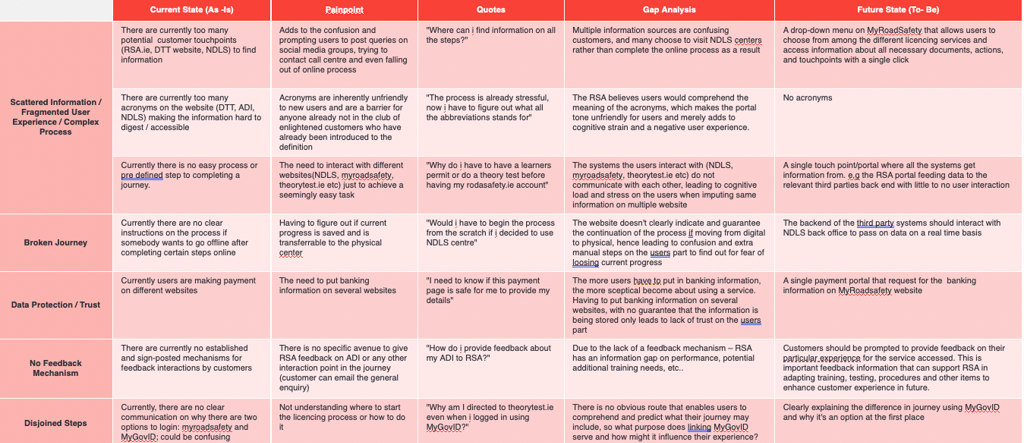

GAP Analysis- Learner Permit to Driver Licence
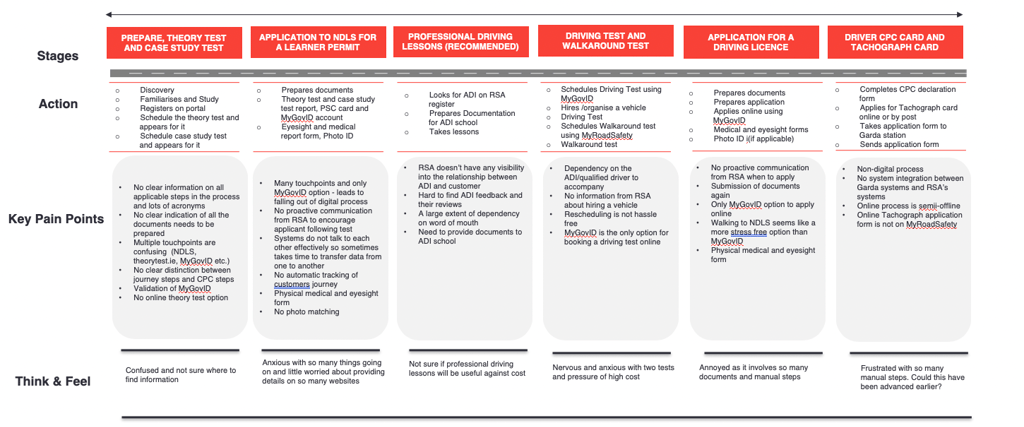

As-is Customer Journey - Learner Permit to CPC Licence
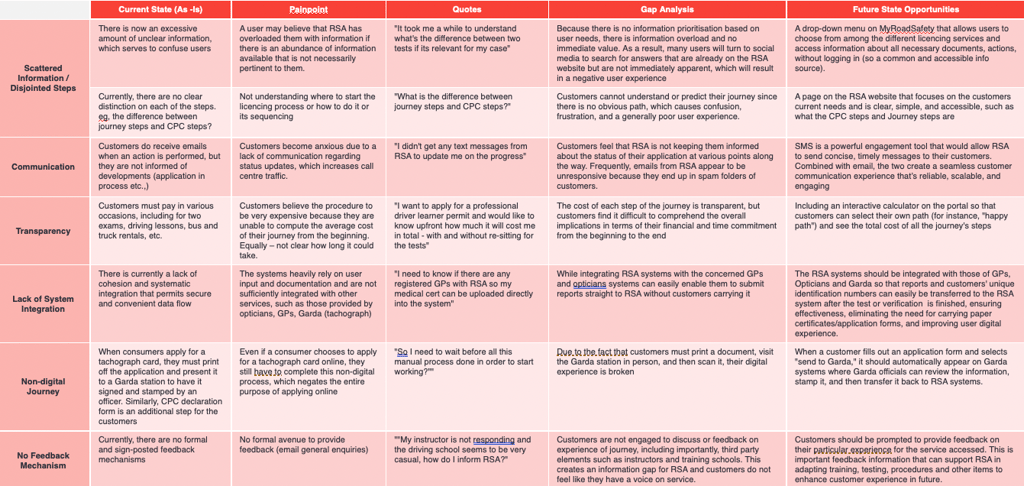

GAP Analysis - Learner Permit to CPC Licence
The Goal
The goal here is not to suggest that mandatory tasks such as sitting for theory test or needed verification be completely virtual, but rather to see if a more seamless process can be put in place to ensure that these physical checks are pushed back into the digital journey at the earliest opportunity. This way customers, are encouraged to complete all physical steps at once or in sequential order rather than in a fragmented flow (physical - virtual - physical)

